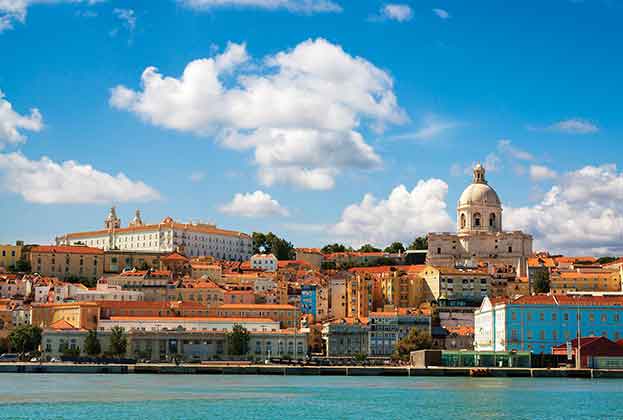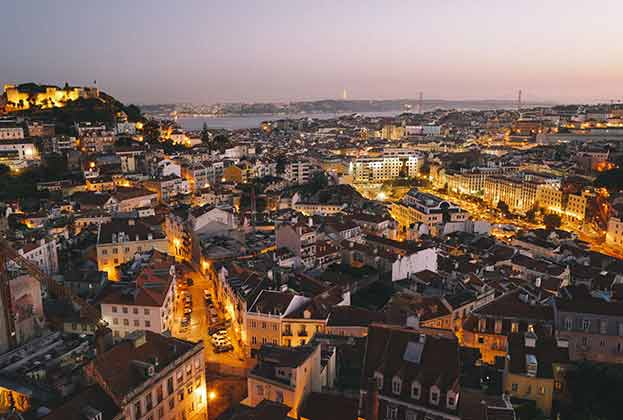Despite strong growth over the past ten years, residential property in the Portuguese capital still represents good value
A global context
With a 98% increase in prime prices between 2010 and 2020 Lisbon has outperformed a number of cities globally over the past ten years. This is well above many other European cities and second only to Berlin which grew by 127% over the same period. Both Berlin and Lisbon have benefited from fast-growing interest from both domestic and international buyers while values have risen from a low base.
Prime residential property in Lisbon appears good value on a global stage. Values, at €8,400 psm, are 80% below those of Hong Kong (the most expensive city in the world for prime residential property), they stand 65% below New York’s prime prices, and are around half those of London.
Lisbon’s prime districts
Centrally located Santo António is the city’s highest valued district, where prime property averages €11,200 psm as of Q2 2020. It is home to some of Lisbon’s most famous landmarks including Marquis of Pombal Square and Restauradores Square, as well as Avenida Da Liberdade, Lisbon’s main boulevard and home of high-end retail.
Misericórdia, where prime values average €11,000 psm as of Q2 2020, follows. Misericórdia is home to the cosmopolitan area of Bairro Alto. Parque das Nações is Lisbon’s third highest valued district for prime property as of Q2 2020, with an average prime price of €10,600 psm. This is the city’s most modern area, transformed for Expo 1998, this district is home to modern office and residential buildings.
Golden Visa and non-habitual residents
The Golden Visa scheme, initiated in 2012, has been hugely successful. As of June 2020, 8,389 Golden Visa residence permits have been issued for real estate acquisitions, and just under €4.9 billion has been invested in Portugal’s real estate market, the majority into Lisbon.
A minimum investment in real estate of €500,000 grants the non- EU buyer a visa and, in the longer term, a route to an EU passport. Foreigners need only be resident in Portugal for seven days in the first year of residency. Of the 8,389 permits issued since 2012, Chinese investors have accounted for the majority (55%).
The Chinese share of total permits has fallen over time, accounting for just 25% of permits issued in the first half of 2020, compared to 83% of permits issued in the first few years of the programme (Oct 2012-Jan 2015). This is in line with a fall in outbound investment from the country as a result of increased capital controls from China, as well as a broadening demand base as the scheme has developed. Lisbon has also benefited from demand for residential property from EU citizens attracted by the non-habitual resident (NHR) scheme, particularly from the French.
Portugal’s NHR scheme offers tax incentives to EU nationals who have not been a tax resident in Portugal for the last five years. NHRs are exempt from personal income tax on income from non-Portuguese sources such as pensions, rental income, capital income and capital gains, for 10 years. (As of April 2020, the tax rate on the overseas pensions of NHRs increased from 0% to 10%.)
Prior to the pandemic, the government had proposed that from 2021 the acquisition of any property in Lisbon or Porto metropolitan areas to be excluded from the Golden Visa scheme. These plans have now been put on hold to aid the market in a challenging economic environment. While granting a reprieve, this suggests that longer term the scheme’s future as a market driver in the city is uncertain.
Read the other articles within Spotlight: Lisbon Residential Market 2020 below
.jpg)

